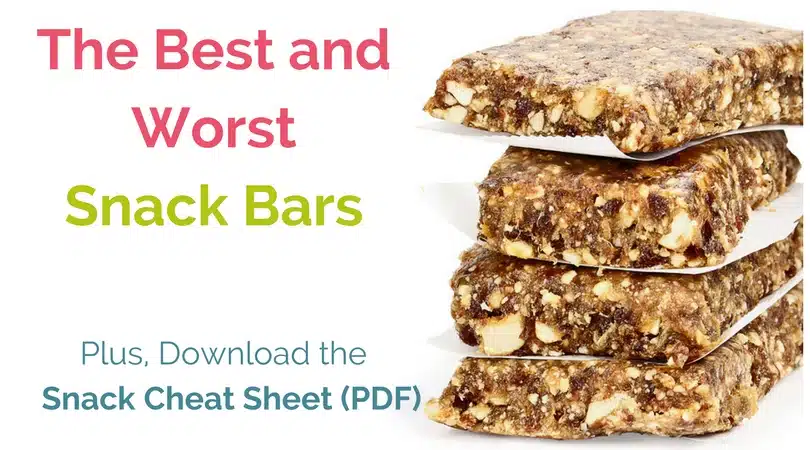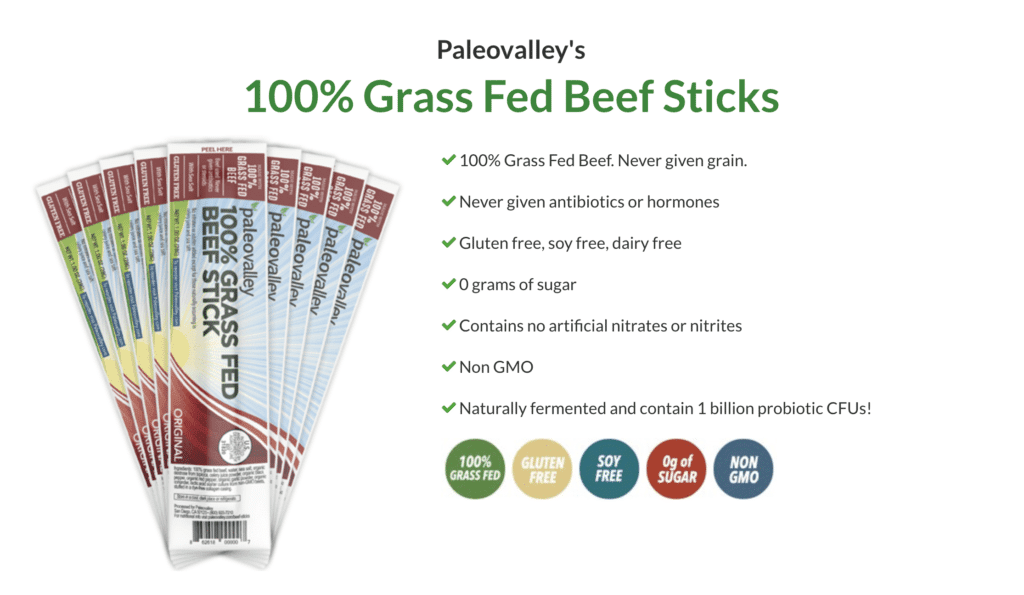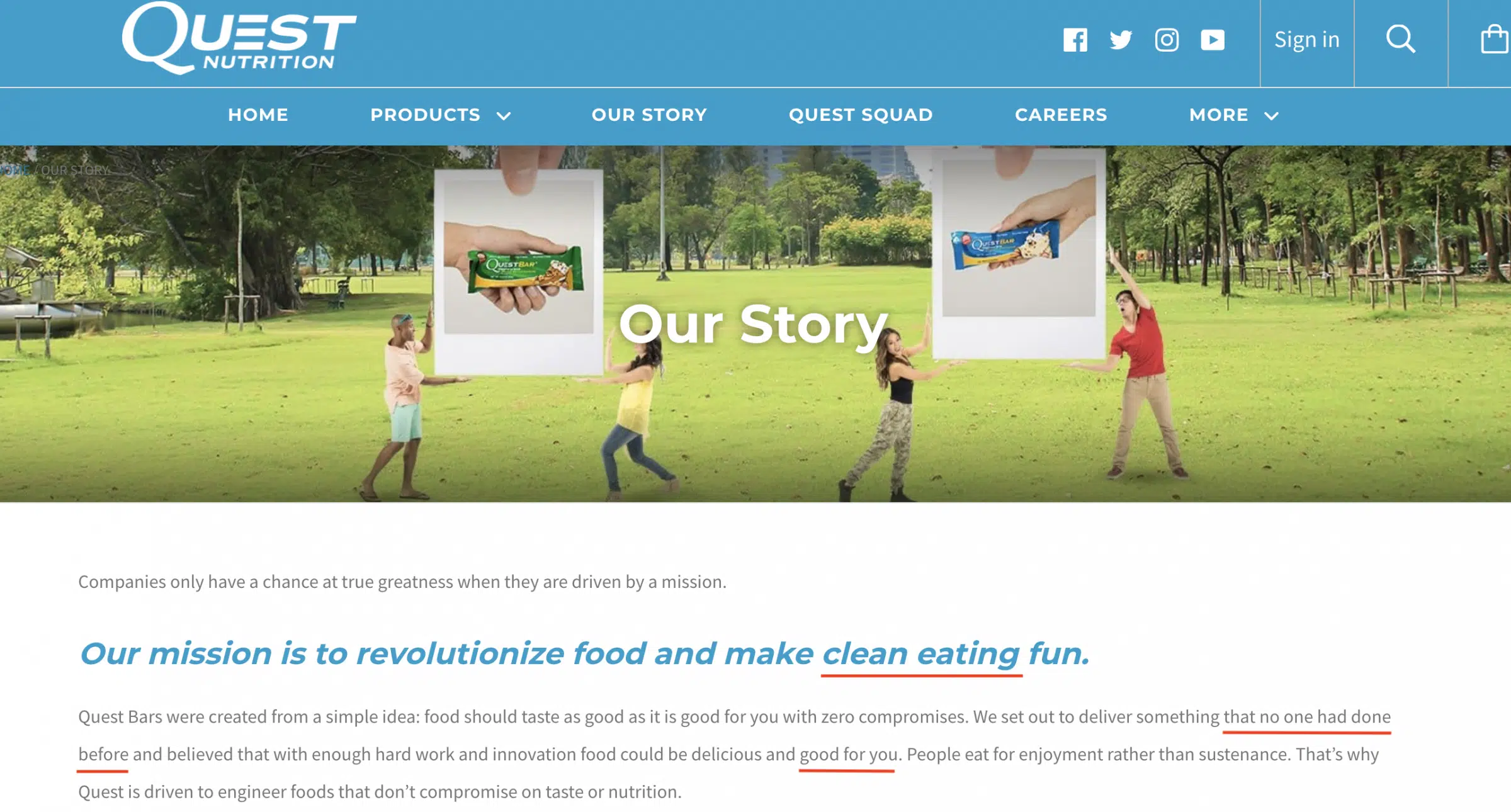I went to a yoga class the other day. A woman unrolled her yoga mat next to me and complained she was so tired that she needed sugar to “pick her up.” After the class, I asked her how she felt and she said: “Fine but now jittery and shaky.” She then proceeded to wolf down another Vega bar.
When I moved to the United States, one of the biggest surprises was the amount sugar people consume and the taste pallet that is accustomed to, what I felt, was awfully over sweetened food and drinks.
When I started my private practice, I predominantly worked with women who “ate really well.” Yet, none of them felt healthy, energetic, slept well and had balanced hormones.
One of the reasons?
Unintentionally high sugar consumption. Much of which was coming from snacks and on-the-run food.
What was setting them back further was accompanied by highly processed forms of protein, masked by skillful marketing; more on that further down the article.
My friend Autumn and I did a fun snack attack assessment Facebook Live (I really enjoyed throwing crappy bars around the kitchen, LOL).
As a result of this video and the great feedback and questions we received from you guys, I created the below Snack Cheat Sheet.
You can also download it here (PDF version).
What we considered in our snack assessment
The amount of sugar
4 grams of sugar equals 1 teaspoon. The top offenders, to your surprise, might be Lara Bar which we love as it only contains 3 wholesome ingredients, but… the fact remains that it contains 5.75 teaspoons of sugar.
My daily recommendation for sugar consumption, if you want to rebalance and keep your hormones and inflammation in good check, is no more than 5 teaspoons of sugar (20 grams) per day. This includes all the fruit, root vegetables, and drinks. As you can see, one Lara Bar will max out your daily sugar limit and might send you in the direction of hypoglycemia; feeling anxious, jittery, unfocused, shaky and moody. And, craving more sugar a few hours later.
The type of sugar
Some bars make an appealing claim of “zero sugar” because they use alcohol sugars such as maltitol (used in Think Thin), mannitol or sorbitol. They are synthetically derived sugars which have no effect on the blood sugar levels but can cause bloating, pain and diarrhea, especially in people with IBS (which is most of our readers).
Anecdotally, the only sugar alcohol I see many people being able to tolerate is erythritol (often used together with monk fruit).
A number of the bars in the Snack Cheat Sheet use artificial sweeteners.
For example, Quest, assumed by many of our viewers as a healthy bar (thank you for asking about it!), uses allulose and sucralose; the latter goes under the brand name – Splenda.
It’s a sweetener that any healthy or health-aspiring person should avoid.
It’s been linked, ironically, to diabetes (see this study), and interfering with detoxification abilities (here). The same study states: “Sucralose alters indigenous bacterial balance in the GIT.”
Other names of artificial sweeteners to avoid at all cost are:
- Acesulfame Potassium – used in Sunnett, Sweet One.
- Aspartame – brand name: Nutrasweet, Equal.
- Neotame
- Saccharin – brand names: Sweet ‘N Low, Sweet Twin, Sugar Twin.
- Sucralose – brand name: Splenda.
The amount and type of protein
Part of our snack scoring is based on the amount and the type of protein used. If there is a good amount of healthy protein, even with some sugar content, protein helps cushion the blood sugar spike so you ingest the sugar over a longer period of time. (This makes little difference for women struggling with Candida – in which case, I recommend to look at the beef sticks).
Here is where the problem is: Not all proteins are made the same.
Many of our Facebook Live viewers asked about Quest. Their website reads: “Our mission is to revolutionize food and make clean eating fun.”
That’s a bold statement, clearly targeted at people who have no time to decipher and research each ingredient on the long ingredients list which frankly, looks like a chemical lab.
Quest uses both whey isolate which has been linked to liver damage and soy protein isolate which can cause food and nutrient malabsorption.
Note: whey isolate is not the same as whey protein. The premise of whey isolate is that it contains 90% protein and is lactose-free. However, to achieve that, there is significant processing of whey which leaves it denatured. Think of it a little like poppy plant and heroin; the latter is a highly processed and denatured outcome of the innocent, healthful poppy plant.
So, even though Quest contains a respectable 15 grams of protein (in an isolate form), this type of protein will only sabotage your health.
I like for the snack to contain a fairly high but clean source of protein. If you are avoiding sugar (because you are doing a Candida cleanse or want to keep your inflammation under control), my favorite high-protein snack is the beef sticks from Paleovalley (more on that below).
Type of emulsifiers
Many of the products use soy lecithin as an emulsifier. Do you know how fat and water don’t mix? Soy lecithin makes this possible; ensuring a good bar consistency. Some people, especially with more sensitive digestion (which are many of our readers), can experience pain, bloating and diarrhea.
The amount of fiber
Fiber, similarly to protein, will slow down the increase of blood sugar levels, therefore the more the better.
Inflammatory ingredients
The bottom line is: you should not be a chemist to decipher what the product ingredients are. The general rule is the more unpronounceable ingredients and the longer the list, the more processed the food is. More processing means the more inflammatory response from your body.
It’s that simple.
I often get push-back from our readers when I encourage to stop using protein powders and shakes in their smoothies. I wrote an article about it – which was prompted by my experience being in the private practice; seeing women regaining their digestive health in days after quitting their shakes.
DO NOT let marketing get to you. Do not let celebrities tell you what to eat. Celebs get paid upwards of $200K for product endorsements and saying whatever the script reads. The reality is: they all have private chefs who make the cleanest, freshest food for them. None of the processed stuff.
The bar snack winner is…
Back to our Snack Assessment. The winner is, hands down, is the Paleovalley Superfood bar.
For these reasons (based on the chocolate bar):
- It uses minimal sugar content (only 3 grams which is 0.75 teaspoon)
- To balance the sweetness, it uses monk fruit which is a non-glycemic sweetener naturally occurring in the monk fruit in China. They do not use any artificial sweeteners or sugar alcohols.
- It’s packed with nutrient-dense foods such as pumpkin seeds, flax, turmeric, cacao, acerola (food richest in vitamin C), ginger, spirulina, chlorella, and grass-fed collagen.
- The protein content is a respectable 11 grams of clean protein; no isolates.
- It contains grass-fed collagen linked to gut healing, spin, bone and muscular health
- It brings in 9 grams of fiber; higher than most snack bars in the market.
- It does not contain any processed ingredients.
The Hormones Balance community gets 15% OFF Paleovalley products. Enter coupon code PVFRIEND15 to get 15% off the order. The link to the superfood bars is here.
It helps to know that the co-founder of Paleovalley had so many food sensitivities that she had to develop a product clean enough for her to eat – for us all to benefit from it.
The first runner-up is Mama Chia – for their low sugar content, high fiber, organic and non-processed ingredients. Thrive Market sells them at a 30 to 40% lower price than Whole Foods.
Next: Meat sticks
As for meat sticks and jerky, I used the above evaluation criteria (see the Snack Cheat Sheet).
I used to eat Epic but I don’t love two things about them: the meat is not organic and it contains sugar. I would rather get my sugar from my favorite fruit, drinks, and the occasional dessert, not meat.
Here, once again, my pick is the Paleovalley beef sticks, for these reasons:
- no sugar
- nothing artificial
- fully organic and grass-fed (and finished as grass-fed)
- needless to say; contain no nitrates and nitrites
- use lactic acid that isn’t derived from
Plus, they taste so darn good.
The Hormones Balance community gets 15% off on the beef sticks – use PVFRIEND15 as a coupon code at checkout. You can get them here.
About my friends at Paleovalley
My friends from Paleovalley moved to Boulder, Colorado (where I now live as well) from San Diego to be closer to where their source material is coming from. I have never met food makers going to visit their farmers; regularly inspecting the facilities and the quality and lushness of the grass (!) the animals eat to ensure the highest nutritional profile of the meat. Have you heard of any food makers doing that?
It took them months to find beef suppliers who would not only grass-feed the cows but grass-finished them too. Most grass-fed meat in the market is grain-finished – fattening up the animal guarantees the highest returns for the farmer. Very few stick to grass-feeding and finishing.
We create the best products when we are in crisis. I certainly won’t be running Hormones Balance if it was not for my own health crisis.
Same here; Chas and Autumn Smith created Paleovalley because Autumn got so sick and sensitive to so many foods that as a busy on-to-go personal trainer and dancer, she could barely eat anything, let alone the regular snack bars. She was reactive to nuts as well. In the Facebook Live we did together, she admitted to having lived on Vega bars thinking that it was a clean bar; yet, her tummy was so indented that she looked like a 4-months pregnant woman.
So yes, I am proud to call them my friends. This is also very much a Boulder, Colorado spirit – to be proud of the cleanest, safest products and running a mission-based business.
I shared that in August 2017, I had a double hit replacement (if you want to read about the pre- and post-surgery protocol I did, go here). I craved meat, especially in the first 2 weeks – the nurse said it was normal as the body needs the amino acids and iron to heal.
My friend brought dates wrapped in bacon and just after a few of them, I immediately felt inflamed and in pain – from the sugar in the dates. I had to stick to snacks with no sugar and this is where the Paleo Valley beef sticks were such a great choice; they contain no sugar and taste so delightful.
Are you AIP? Paleovalley is coming out with turkey sticks which will be AIP compliant – stay tuned, I will do a shout-out when they become available.
How much marketing influences your buying decisions
Where you put your dollar – is where the products flourish
You fuel the products and companies (good and bad) by putting your money behind them. That’s one empowering thought – we can change the food industry by either buying or boycotting products.
It’s that simple.
Start observing how marketing impacts your decisions
Did you know I used to work in advertising as a strategic planner on some of the iconic brands like Nike, Johnson’s Baby, Neutrogena, L’Oreal, Kiehl’s, Pepsi and Volkswagen?
I used to help create the front of the labels and messaging strategies, and today I help to look under the hood and screen the back of the labels. Life is like that when our life’s purpose changes.
Start noticing how advertisers want you to feel about their product by placing it in circumstances that make you feel in a certain way.
An example here: Clif bar positioned as the perfect companion when you spend time outdoors; this is the place and time you feel refreshed, healthy and carefree. The product is then sublimely positioned as the tool to make you feel this way; even when you are actually not camping.
Another example is Quest which frankly, I was appalled by when I saw the product ingredients list.
This is “their story” and promise to the consumer that their food is clean.
And here is the reality:
- They use protein isolates which have been linked to liver damage and non-alcoholic fatty liver (see citations above).
- They use artificial sweeteners (allulose and sucralose) which have been linked to obesity, diabetes, systemic inflammation, impaired detoxification and damaging the good gut bacteria. (Btw, have you met truly healthy people using artificial sweeteners? I have not.)
- They make claims as if they were the one and only company making good food. Really?
I hope this article equips you with the knowledge of how to pick good snacks for you and your family and gives you an opportunity to support clean, dedicated businesses.
Share with us what kind of snacks have you found that would score high on the Snacks Cheat Sheet?
Please note that I am an affiliate for these products and do receive a small percentage of sales, but all opinions are my own.







How do we download this document?
It only shows up as HTML, not a .pdf….. please, I would love to have the pdf file of this.
Can you explain how to save it to my computer? I’m not savvy with google downloads!!!
Anne
[email protected]
Hi, the link is here: https://hormonesbalance.com/wp-content/uploads/2018/02/SnackCheatSheet-HormonesBalance.pdf
Separate from the sugar in these products, many of the snack bars being sold are not organic so the pesticides that are in the products are poisonous to our systems and causing havoc to the GI tract. And saying that they are non-gmo (if it’s organic it can’t be gmo), is absolutely ridiculous because it’s still has the pesticides anyway. I find it laughable that the commercial for Larabar says that the ingredients are natural. I didn’t realize that pesticides are natural. Same thing with the Kind bars (if fact, not so Kind).
Thank you. Yes, this is why why have the “Organic” column. 🙂
You didn’t mention HerbaLife protein bars. have you looked into them?
I won’t buy any food from MLM companies. Herbalife has one of the worst products and formulations – most of the time they don’t even disclose the ingredients on their website. As I said: read the labels, not the BS they are pitching.
I just love your honesty and out-spokenness – it’s such a change from the sneaky, underhanded way certain people deal with responses they make to unsuspecting readers. Bravo!
The link referring to dangers of soy protein isolate is actually, refers to the study about its benefits for fatty liver disease.
Thank you – I’ve just updated the citation.
I’m happy to see your review. Thank you so much for doing this! I’m trying to purchase the Paleo Valley meat sticks pack, with no success. On their page ‘Continue to Checkout’ button doesn’t work and I can’t find how to contact them either.
On your post I noticed hmm, let’s call it ‘glitch’, in last description of the meat sticks: use lactic acid that isn’t derived from (here a word is missing but I deducted it was something that I should have avoid)
Great Article for those who don’t eat due to health issues.But i think you solve that issue in article well way.
https://onlinehealthconsultant.blogspot.com/
PV’s Turkey sticks are delicious! and I am also just now trying their collagen (not made from animal hides)
Being allergic to agave syrup and mango I am very hesitant to try the monk fruit sweetener as that is a tropical type fruit like my allergies.
Hi Lisa, this would be an important consideration and may not be a suitable fit for you. ~HB Support.
Thank you for providing this resource and information!!